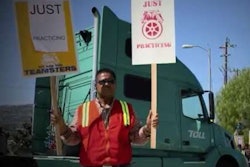Two things come to mind about the Texas stereotype: big and independent. Both are at work in the new section of toll road that opened Wednesday with an 85 mph speed limit, the nation’s highest.
The remaining 41 miles of the SH 130 toll road run from just south of Austin to an intersection with I-10 northeast of San Antonio. The toll road’s intent is to provide relief for a highly congested part of I-35. The private project will bring $100 million to the state.
Because the 85 mph limit raises safety questions, the national media has ignored the state’s familiar slogan: Don’t mess with Texas. Reports often note that 85 mph exceeds hurricane winds. They also cite the Insurance Institute for Highway Safety, which argues that as speed limits rise, so do fatalities. Many studies, not to mention common sense, bear that out.
Realistically, though, the new road might have a honeymoon period of low volume and relative safety. “I would expect over the years, when the congestion increases on the toll road, TexDOT will re-evaluate that speed limit,” says John Esparza, president and CEO of the Texas Motor Transportation Association.
Trucking’s perspective hasn’t gotten much coverage. Most of the bigger carriers in Texas, as elsewhere, govern their trucks around 65 mph. That creates a 20 mph difference between trucks and every other vehicle on SH 130. “That’s a safety concern that companies don’t like to put themselves in the middle of,” Esparza says.
Given the toll, safety worries and the inability or unwillingness of many truckers to drive 85 mph, heavy-duty trucks could be underrepresented on the new part of SH 130.
This will disappoint four-wheelers who stick to I-35, hoping to see big trucks migrate to the toll road, and don’t realize why trucks often drive slower than everyone else. They don’t know that a 10 mph reduction at highway speed improves a truck’s fuel economy by a full mile per gallon.
Not so with cars. A similar reduction yields only a 1 percent fuel savings, at best. Some studies show certain models actually get better fuel economy at a higher speed. So even $10-a-gallon gas would not make Texas motorists reconsider zipping around at 85 mph.
That’s probably for the best, as far as trucking goes. Esparza notes that SH 130 seems to be aimed more at the commuting public. Let’s hope that it draws plenty of four-wheelers and makes I-35 a little more tolerable for commercial drivers.










